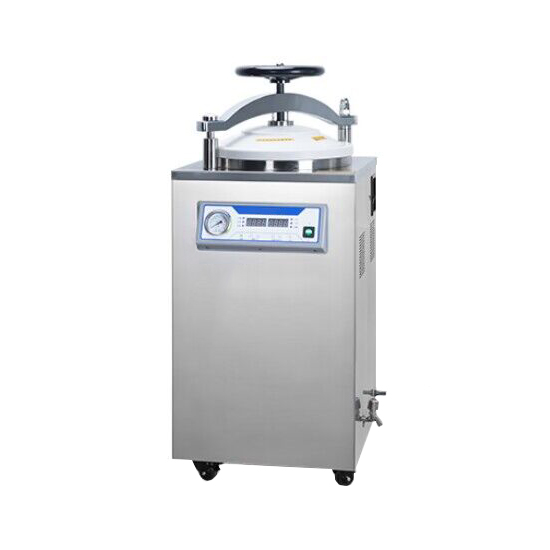What are the Advantages of Steam Autoclave Sterilizer?
Today, we are thrilled to talk about a revolutionary product that has transformed the field of sterilization---the Steam Autoclave Sterilizer. Whether you work in a hospital, laboratory, dental clinic, or any other medical setting, the importance of effective sterilization cannot be underestimated. In this blog post, we will delve into the incredible advantages of using a steam autoclave sterilizer and why it should be an essential part of any healthcare facility.

- Superior Sterilization: The primary advantage of a steam autoclave sterilizer lies in its ability to provide superior sterilization results. The process involves subjecting medical instruments and equipment to high-pressure steam, typically at temperatures around 121 °C to 134 °C (250 °F to 273 °F). This combination of high heat and pressure effectively destroys a wide range of microorganisms, including bacteria, viruses, fungi, and even the most resilient bacterial spores. The steam's high temperature is crucial because it denatures and disrupts the proteins and enzymes in microorganisms, rendering them unable to function and reproduce. The pressure ensures that the steam can penetrate even the smallest crevices and hard-to-reach areas of the instruments, ensuring a thorough sterilization process.
- Quick and Efficient: In busy medical environments, efficiency is vital, and autoclave machine excel in this aspect. Compared to other sterilization methods, such as chemical solutions or dry heat sterilization, steam autoclaves offer significantly shorter sterilization cycles. The rapid sterilization process of steam autoclaves is particularly beneficial in emergency situations or during busy periods when there is a high demand for sterilized instruments. The quick turnaround time ensures that healthcare professionals have access to sterile equipment promptly, reducing delays in patient care and surgeries.
- Safe and Environmentally Friendly: Autoclave sterilization is a safe and eco-friendly method compared to some chemical-based sterilization techniques. Since the process uses only water and heat, there are no harmful chemical byproducts produced during the sterilization cycle. This eliminates the risk of toxic residues being left on the instruments, which could potentially harm patients or medical staff. The reliance on water and heat also means that there is no need for potentially hazardous chemical handling and storage, further enhancing the safety of the sterilization process.
- Versatility: One of the key advantages of steam autoclave sterilizers is their remarkable versatility. ATO store's autoclaves can effectively sterilize a wide range of medical instruments and equipment, catering to the diverse needs of different healthcare settings. From surgical instruments such as scalpels, forceps, and scissors to glassware like test tubes and pipettes, steam autoclaves can handle various items with ease. Additionally, they are capable of sterilizing materials like linens and dressings, as well as biohazardous waste, ensuring proper and safe disposal. The ability to sterilize diverse items makes steam autoclave sterilizers an indispensable tool in hospitals, clinics, dental offices, research laboratories, and other healthcare facilities.
- Cost-effective: Investing in a steam sterilizer autoclave proves to be a cost-effective choice for healthcare facilities in the long run. While the initial purchase cost may be relatively higher compared to some other sterilization methods, the ongoing operational expenses are significantly lower. The main reason for this cost-effectiveness is the use of water and electricity as the primary resources for generating steam, which are generally more affordable than the consumables required in other sterilization techniques. Moreover, steam autoclave sterilizers do not rely on disposable items like chemical solutions or single-use sterilization packs, which can add up to considerable expenses over time.
- Regulatory Compliance: In the medical field, adherence to strict regulations and guidelines is essential to ensure patient safety and quality of care. Steam autoclave sterilizers meet the stringent sterilization standards set by various regulatory bodies, including health authorities and professional organizations. Regulatory agencies, such as the Food and Drug Administration (FDA) in the United States and the Medicines and Healthcare products Regulatory Agency (MHRA) in the United Kingdom, often specify guidelines for sterilization processes in healthcare settings. Steam autoclave sterilizers, when operated correctly and validated regularly, comply with these guidelines and provide the assurance that medical instruments are thoroughly sterilized and safe for patient use.
- Reliability and Durability: Manufacturers of sterilizer machine use high-quality materials and precise engineering to ensure the machines can endure the stress of frequent operation and the high-pressure steam conditions. This reliability is critical in healthcare settings, where interrupted sterilization cycles can lead to delays in patient care or compromise infection control protocols. Furthermore, the robust construction and engineering of steam autoclave sterilizers reduce the likelihood of breakdowns and malfunctions. However, regular maintenance and calibration are still necessary to keep the machines running optimally and to extend their service life.
- Simple to Operate: Despite their sophisticated technology, steam autoclave sterilizers are designed to be user-friendly and straightforward to operate. The control panels of modern autoclaves feature intuitive interfaces with clear instructions, making it easy for healthcare staff to navigate through the sterilization cycles. Operators typically need to load the items to be sterilized into the autoclave chamber, close the door securely, and select the appropriate sterilization program based on the type of instruments and materials being used. Once the cycle begins, the autoclave operates automatically, ensuring the correct combination of heat, pressure, and sterilization time is applied. The simplicity of operation reduces the chances of errors and user-related issues during the sterilization process. Proper training for staff members involved in operating the autoclave is still essential to ensure the best results and compliance with standard protocols.
In conclusion, the advantages of steam autoclave sterilizers cover a wide range of crucial aspects, making them a preferred choice for sterilization in healthcare settings. Their superior sterilization capabilities, efficiency, safety, versatility, and compliance with regulations, along with their cost-effectiveness, reliability, and user-friendliness, all contribute to enhancing infection control practices and ultimately, improving patient care.

